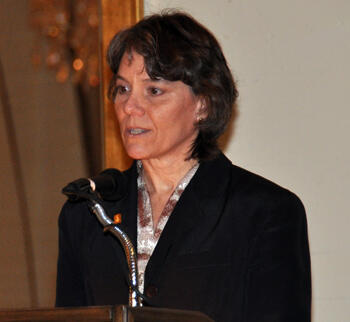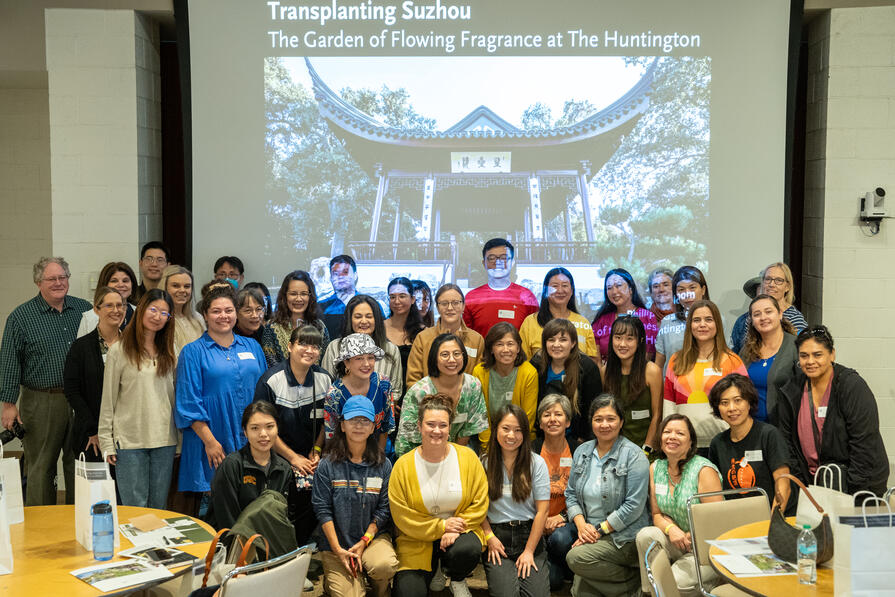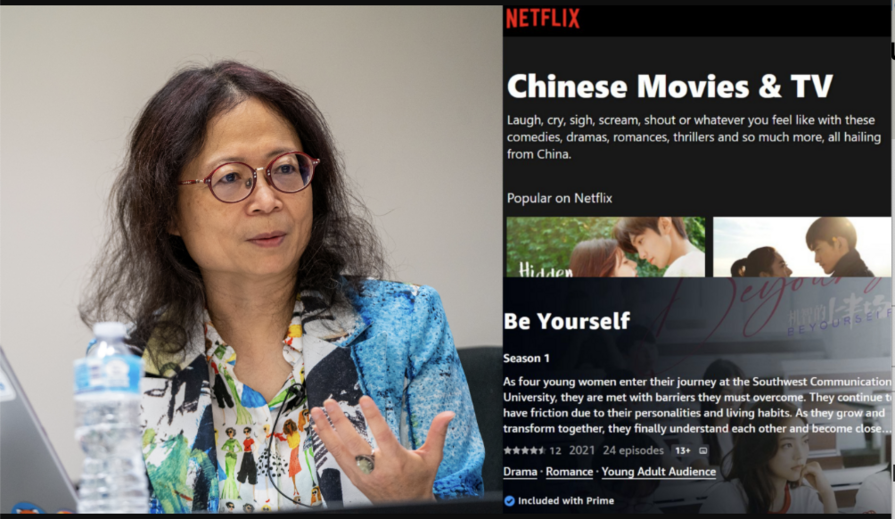This video is also available on the USCI YouTube Channel.
Click on the play button above for Susan Brownell’s presentation on the Beijing Olympics.
Susan Brownell posted this abbreviated version of her presentation at The China Beat. Prof. Brownell and others have contributed many Olympics-related posts to The China Beat.
There was a common perception outside China that the Beijing Olympic Games involved a master plan to promote a positive image of China to the outside world and that this was one of the major goals of hosting the Olympic Games, if not the major goal. I want to argue that while there was widespread agreement in China that the Olympics were an excellent opportunity to promote an image of China to the world, the vast majority of the attention and effort was focused on the domestic audience; that there was never a concrete communication strategy for dealing with the human rights issue; and that in both instances, China’s ability to communicate a positive international image was hindered by the domestic political structure.
Many Western journalists and Amnesty International accused China of failing to keep its promises with respect to its human rights record. But China had not made any such promises, and if journalists had read chapter five of my recent book, Beijing’s Games, they would have known that there was a big internal debate about even the one sentence about human rights that was made in China’s bid presentation in 2001.
However, in its bid China did make one promise that it arguably kept, and that was its promise to host a “people’s Olympics.” There were three main themes for the Olympic Games: the High-tech Olympics, the Green Olympics, and the renwen (人 文 奥 运 ) Olympics. Renwen is difficult to translate. It was sometimes translated as the “humanistic Olympics,” but after some debate, the preferred official translation was the “People’s Olympics.” This theme was originally intended as a response to the West’s criticism of China’s human rights, but this was never made explicit to the West.
One of the central concepts of the People’s Olympics was 以人为本 , “take people as the root,” or “people-orientation.” This phrase had appeared in political rhetoric when Hu Jintao named it in his address to the Third Plenum of the 16th Party Congress in 2003. This preceded the inclusion of a passage on human rights in the revision to the Constitution in 2004. It is interesting that as early as 2001, 以人为本 had already been written into the guiding thought for the Beijing Olympic Games.
In 2000, Beijing Mayor Liu Qi began commissioning a number of groups with the task of developing the basic thought behind the 人 文 奥 运 because he felt that, unlike the other themes, it was unclear. The People’s University formed the Humanistic Olympic Studies Centre to study it. One of the non-Communist Parties, the Democratic League, was commissioned by Liu Qi and began developing working papers in 2001. Forums were held, dissertations and books were written on the topic, working papers were drafted, websites were created, and by the start of the Games it was estimated that at least ten thousand pages had been written on the topic of the “People’s Olympics.”
Faculty members of the Beijing Sport University and the Humanistic Olympic Studies Center of the People’s University were particularly involved with the relevant sport, educational, and cultural organs of the central and Beijing government. Although they had travelled abroad, these intellectuals were all largely focused on the domestic audience and not the international audience. They gave dozens if not hundreds of interviews to Chinese media, appeared frequently on CCTV, and were influential in shaping domestic media opinion. They seldom gave interviews to foreign media and on occasions when they did they were belittled as Party-liners (see these characterizations of Beijing Sport University’s Ren Hai and People’s University’s Jin Yuanpu).
As a result of the orientation of the intellectuals who designed it, the guiding thought of the People’s Olympics was largely diverted away from any focus on China’s international image and into a debate over culture and education. In my interactions with BOCOG and the intellectuals who were working with it, I felt that about 80-90% of the effort that went into this symbol-making was directed toward the domestic audience. The main focus was on the questions of how to manage the “combination of Eastern and Western cultures” (东西结合)that the Games were supposed to facilitate, how to promote Chinese culture within China and to the world, how to use the enthusiasm for the games to raise the general quality (素质) and civility (文明) of the Chinese people, how to prepare the next generation of young Chinese to take their place in the international community.
These discussions and debates formed the intellectual context for Zhang Yimou’s opening and closing ceremonies, the Olympic education programs in the schools that reached as many as 400 million Chinese schoolchildren, the training programs for the 70,000 Olympic volunteers, the cultural performances in the Cultural Olympiad, and the myriad of other cultural and educational activities that surrounded the Games.
Perhaps the major way in which the guiding thought about the promotion of China’s national image was generated was through three keypoint research projects commissioned by the National Planning Office of Philosophy and Social Science, which is administered by the Central Propaganda Department. These grants are the government’s way of channeling academic research in directions that serve its needs. The relative unimportance of the Beijing Olympic Games is indicated by the fact that from 2003 to 2008, only five related projects were funded, of which three were “keypoint” projects with a competitive application process. By way of comparison, in the same time period the number of funded projects that fell under the rubric of “Marxist-Leninist Services” was 190, and under “Party History and Construction” was 178. The first relevant Olympic project was the 2003 project entitled “Improving China’s International Position and Reputation through the 2008 Olympic Games.” The Beijing Sport University won the bid for this project and in April 2007 published the results in Research on Improving China’s International Position and Reputation through the 2008 Olympic Games (《2008年奥运会提升中国国际地位和声望的研究
》). Its 65 chapters contain thorough summaries of the issues that provoked negative media reports in past Olympic Games, such as delays in venue completion, transportation problems, media information glitches, terrorist acts, and so on. The lesson that Beijing clearly learned was that these particular problems should be avoided at all costs, and ultimately they avoided all the problems that got negative media coverage in previous Olympics. The analyses of Western media coverage of the Beijing Games since 2001 indicated that “political” issues – as they are called in China - would dominate coverage. However, the resulting recommendations merely emphasize the importance of treating the media and other leading opinion-makers well.The most daring chapter, “Beijing Olympics Speed Up the Transformation of the Functioning of the Government,” analyzes the promises made under the rubric of the “People’s Olympics” - and improving human rights is not listed as one of them.
), which was awarded to the People’s University. Through this project and elsewhere, the People’s University promoted its concept of the “Cultural Olympics.” The final report has not been completed, but in a summary of their conclusions on CCTV in February 2008, they argued that research shows that culture constitutes the core of national image, and “therefore in the construction of a national image, we should hold the line on ‘Cultural China’
If the People’s Olympics was to be the response to Western criticism of China’s human rights record, then it probably needed to directly address the issue of human rights, but the topic was never directly taken on in the reports and research devoted to the topic. But now we run into the structure of domestic control over discussions of human rights. The sports scholars, philosophers, and members of non-communist parties who were developing these documents were not likely to address such a sensitive topic as human rights because it was not their job. The job of communicating China’s position on human rights to the outside world one is one of the official responsibilities of the State Council Information Office, which is simultaneously the Office of Foreign Propaganda of the Central Committee of the Communist Party. This organ’s function is to act as the media conduit between China and the outside world. The Information Office is under the Party Central Committee’s Propaganda Department, which is the nerve center of China’s thought control system. But the factionalism between the various “systems” (系统)of the Chinese government is well-known, and the propaganda system is a different system from the sport, cultural, and educational systems involved in creating and implementing the People’s Olympics; its power base is in media and communications circles. I did not see evidence that it had an active role in conceptualizing the People’s Olympics.
National Image
Olympic China National Image Ad
If there had been a master plan for using the Olympics to promote China’s image, it would have been developed by the Central Propaganda Department. The single person most responsible for coordinating everything would have been Li Dongsheng, who was simultaneously a member of the Party Central Committee, Vice Minister of the State Administration for Industry and Commerce, and – more to the point here - Deputy Director of the Central Propaganda Department, chief of BOCOG’s Media and Communications Coordination Group, and president of the China Advertising Association. Western media tended to make a big deal out of the American (Hill and Knowlton) and British (Weber Shandwick) PR firms that had worked for BOCOG, but in fact the non-Chinese viewpoint that they provided to BOCOG was only one among many collected, and probably not the most influential – and in any case, BOCOG was not empowered to discuss “political” issues.
At the time, we were told that we were making history, because for the first time China was reaching out to the world to try to shape its image, rather than waiting for the world to come and understand it. Those involved in the process seemed to feel that it was an extremely important first step. In December 2007 the Information Office already expressed to me that it knew it was not effective in communicating a positive image of China to the world. It evidently felt it needed a new strategy for dealing with the human rights issue because in December 2008, it announced that together with the Foreign Ministry it was spearheading China’s first-ever “Action Plan on Human Rights,” which would be prepared for release in January by a panel including 50 institutions and NGOs. That this effort was spearheaded by the Information Office and Foreign Ministry, and not by the ministries and offices that actually control human rights, has led Western critics to describe it as a public relations ploy. However, another way of looking at it is that because they are the interface with the outside world, these organs are probably better versed on human rights debates than any others in China. Also, the Information Office’s close connection with the Central Propaganda Department is necessary in dealing with a very important ideological issue. The Chinese announcement states that it will not be just another white paper on human rights, but an actual action plan with benchmarks. A more optimistic interpretation of this measure might be that China’s international image is now being enlisted in a strategy to name and shame the other state organs into closer adherence to international human rights standards. I believe that the momentum for the action plan was strengthened by the difficult experiences surrounding the Beijing Olympics.
Click here to return to the USC Beijing Olympics conference page.




